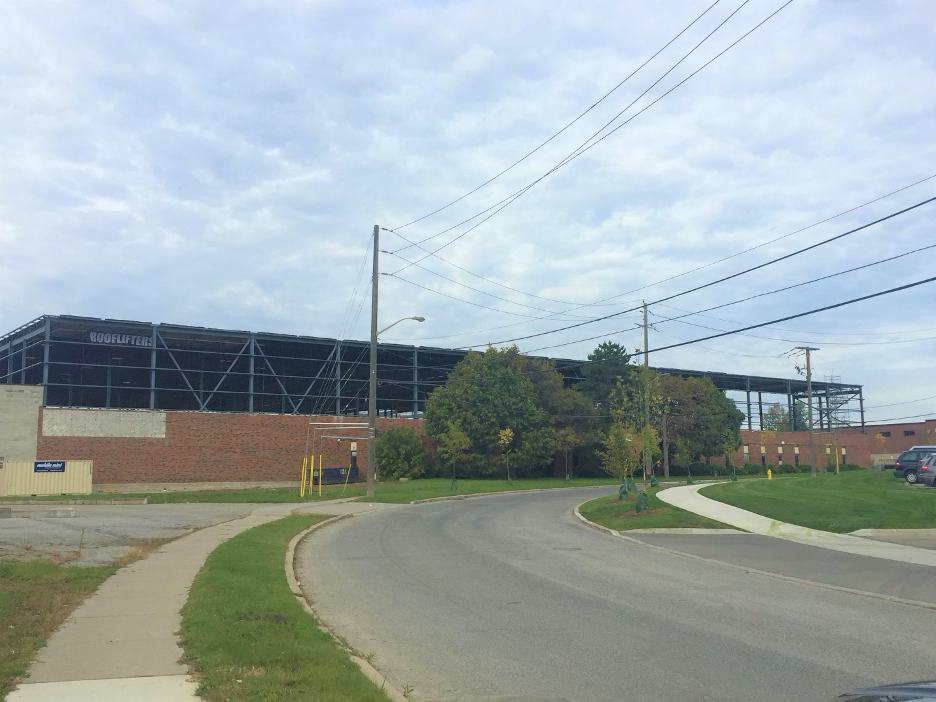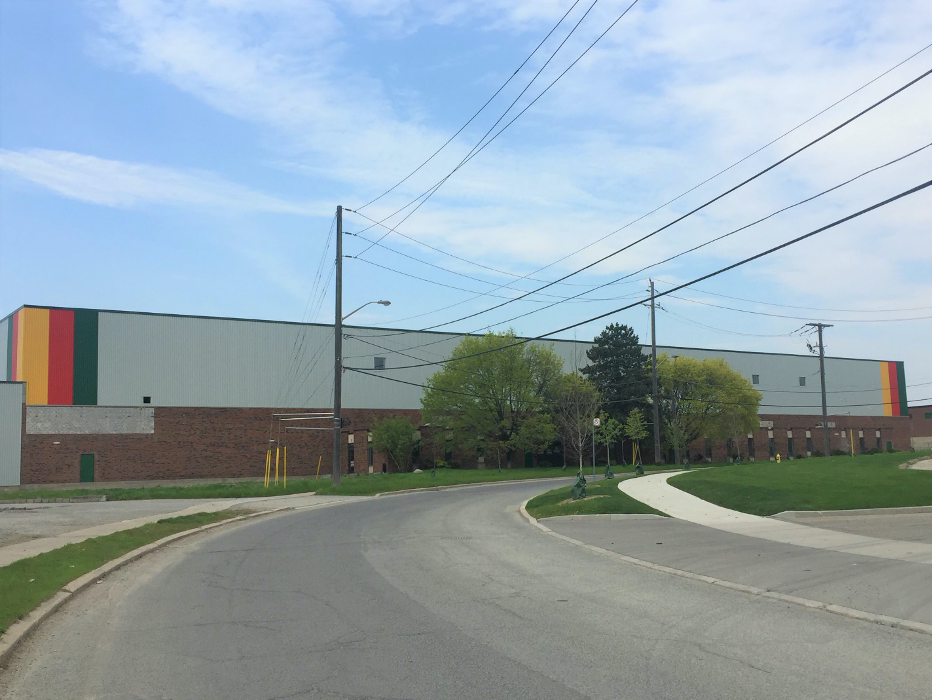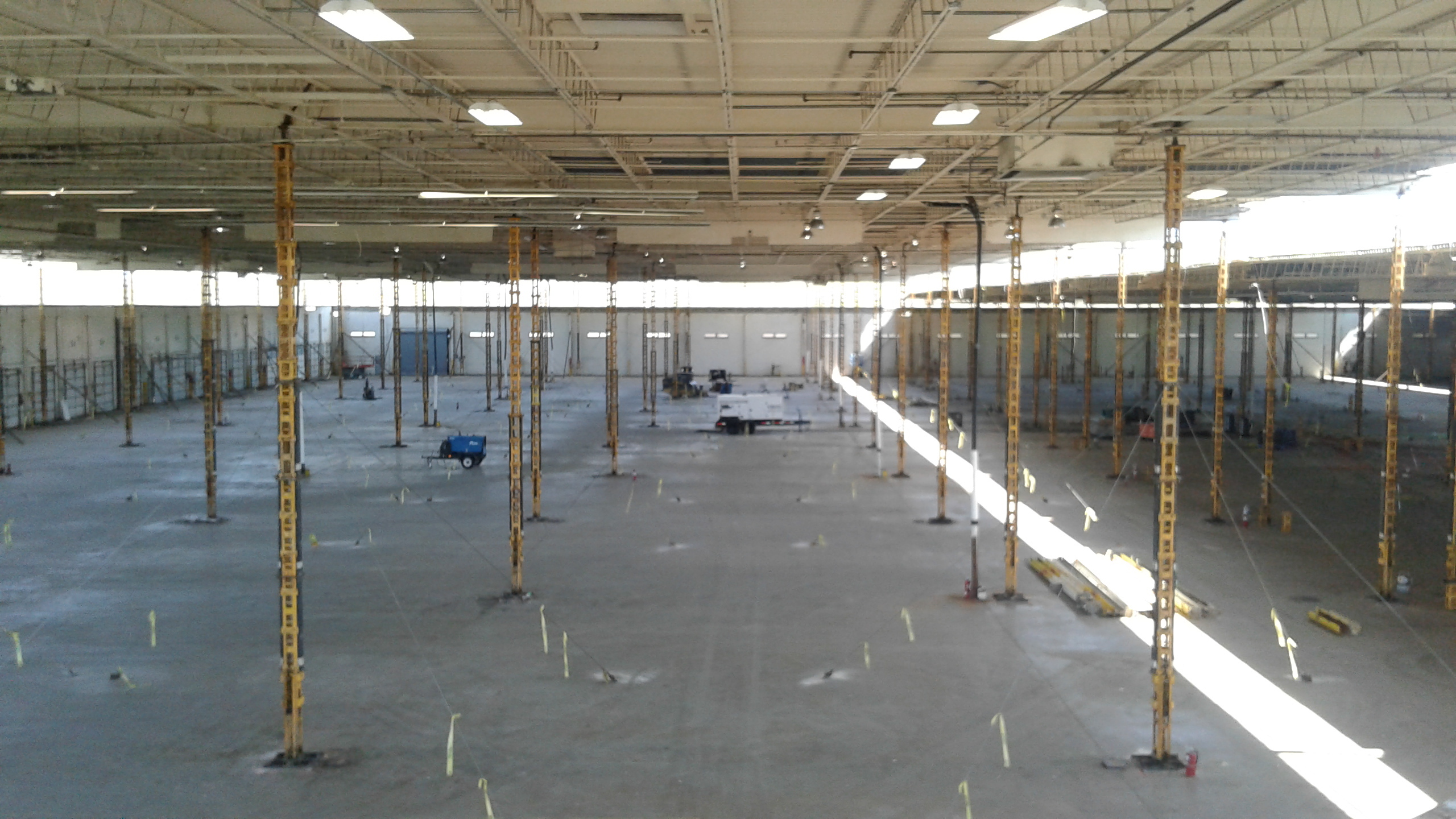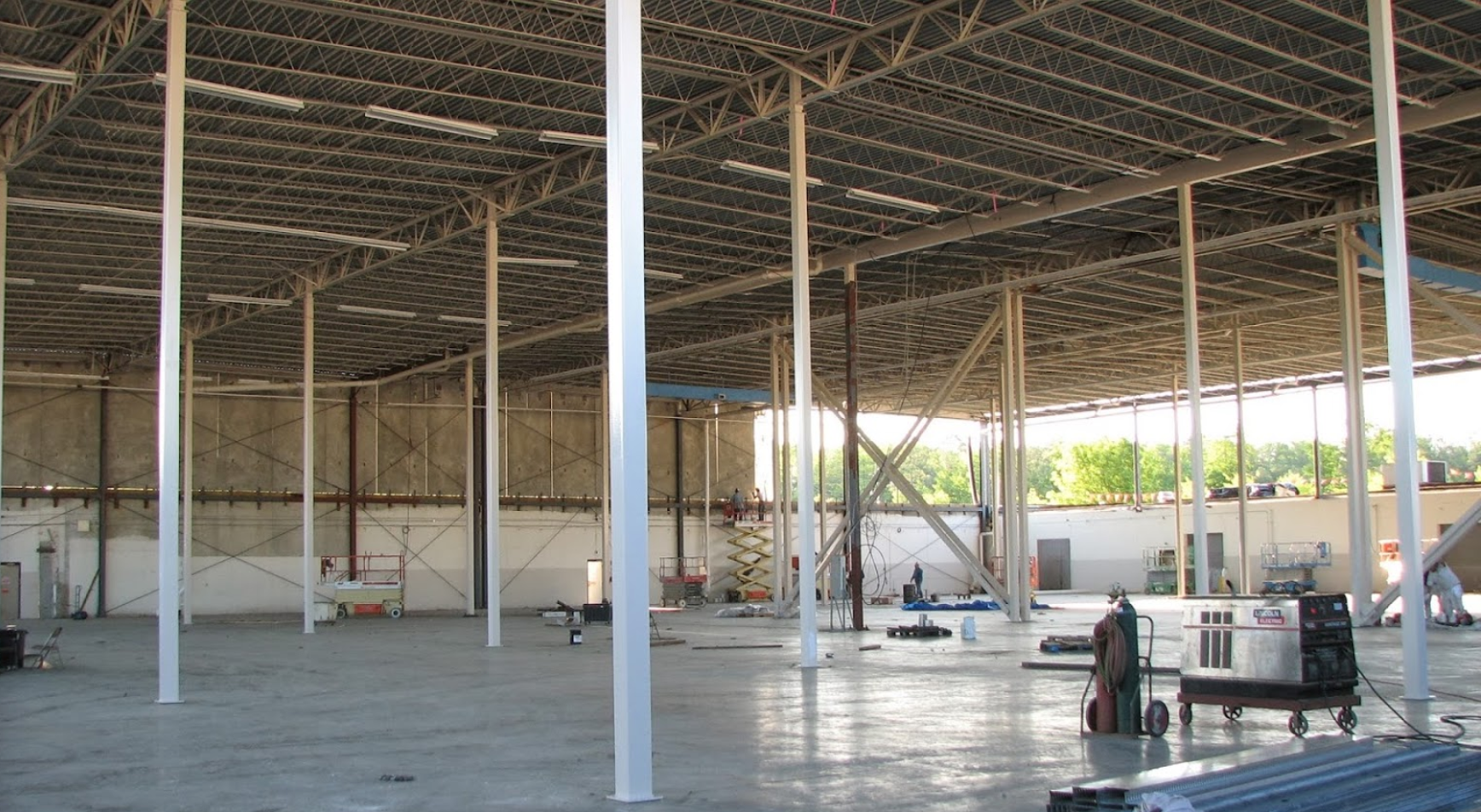How to Double (or Triple) the Volume of Your Industrial Facility
Adding Value and Marketability to Existing Industrial Properties Through Roof Lifting
September 18th, 2020
It’s become apparent over the past few years just how in-demand industrial properties have become.
Specifically, investors and occupiers are desperate to find facilities that can be used for warehousing, logistics, and distribution… as well as manufacturing, cold storage, self-storage, and data centres.
Today, in the Greater Toronto Industrial market, we see two (2) major bottlenecks in the supply of product.
First, we are simply running out of space. Availabilities are – as everyone knows – in the 1-2% range and even lower when looking for something to purchase.
And secondly, a large percentage of inventory is outdated with lower clear heights, minimal shipping, smaller square footage, and overall, less efficient than the modern warehouses we see going up around the periphery.
Here’s why that’s important if you’re an investor or occupier of industrial space.
It is incredibly difficult and becoming increasingly expensive to perform the site selection process, and go through planning and development. Further, purchasing an industrial property is not only becoming expensive but you may have to wait to find anything on the market. So if you’re looking to grow your business’ operations by finding additional space, there is no easy solution.
All of this means that it may be pragmatic to work with what we already have.
So how can someone leverage their existing Industrial property to create space and enhance values?
Well, this week I asked a good friend and expert in this field – Marty Shiff, President of Rooflifters, to weigh in…
=
A Clear Solution to the Clear Height Problem
MOVE OR REBUILD
Often as a business grows so does the need for space. To remain competitive and grow their business California based Experior Laboratories required more room. Experior Laboratories provides independent testing services to component and system manufacturers for a wide range of industries.
However, they were about to outgrow their existing facility. To remain efficient, moving their entire business or operate at two locations was not feasible. They considered the adjacent building but at 16 feet clear its was not capable of accommodating cranes or the testing of larger equipment
After consulting with ROOFLIFTERS, purchasing that building and raising the existing roof to 35 feet clear became the most obvious solution. By lifting the facility’s entire existing roof, Experior was able to convert a building with an ideal location into what they needed.
Why was roof lifting the solution for a business like Experior Laboratories? The option to move to a suitable facility certainly exists, as does demolishing the current facility and building a new larger one. But as obvious as that might seem the options can have major setbacks.
First, real estate and construction prices are continually on the rise in urban areas all over North America. The cost of moving a business can negatively impact a workforce and logistics. Secondly, moving can require the total suspension of business operations. In this case, laboratory testing equipment would have needed to be completely disassembled, and then reassembled in the new facility.
Rebuilding on the current footprint, similar to moving, it would require a business either the complete suspension of business operations or multiple moves. Constructing a new facility would also include a wide range of development and construction costs as well as a number of government regulations, zoning restrictions, and taxes to navigate through. Many of which did not exist when the building was originally built.
Maintaining the existing facility and expanding it outward might seem like an option as well. However, in many instances, this simply is not feasible. If the facility is in a densely populated area, there might not be enough space to expand outwards.
Even when there is room on the property to expand outward, the capacity for trucks to have access to the facility would be either significantly limited or even eliminated.

Interior of Experior Laboratories in Oxnard, CA. The roof was raised from 16 ft to 35 ft to accommodate their expanding service options.
UNDERVALUED BUILDINGS
Allowing a growing industrial business to remain in their current location is not the only reason real estate professionals and business owners are increasing their clear heights. It is also an extremely efficient way to enhance a building’s value or attract tenants.
A Toronto based food distribution company with over 4,000 products, needed to expand their business. When they decided that it was time to acquire a larger facility, they put a very high value on location.
However, Toronto’s competitive real estate market made it nearly impossible to find a suitable facility in the location our client desired that checked every box. Our client did find a vacant 100,000 square foot manufacturing building right in the middle of the city and below market value. The reason it was available and for such an attractive price was due to the low ceiling height and the limited number of loading docks.
After consulting with ROOFLIFTERS, and working out the costs, the client purchased the building. Knowing that the location was ideal, they had decided to modify a section of the building to create ten new state-of-the-art loading doors and docks. They then raised the entire existing roof from 18 to 40 feet, creating a new Toronto distribution facility and retail center without sacrificing location.

Building in Toronto, ON just after the roof was raised from 18 ft to 40 ft. This 100,000 SF facility was renovated due to its ideal location.

Upon completing the roof lifting, the cubic space of the new facility more than doubled with a volume increase of 125%.
POTENTIAL & MARKETABILITY
Forward-thinking is the basis of The Seyon Group’s investment strategy. Based in Boston this industrial real estate company seeks out functionally obsolete properties with the intent to capitalize on under-valued assets.
Knowing the region’s tenants and their desire for cubic space and higher clear heights they identified a 200,000 square foot former can manufacturing facility with only 16 feet of clear height. The building simply wasn’t suitable for today’s demands.
Seyon reached out to ROOFLIFTERS and together prepared a cost analysis and timeline to increase the building’s clear height from 16 to 32 feet and modernize the building. Once purchased, Seyon demolished the interior spaces and put into place a schedule to raise the roof and retrofit the building. Seyon was able to fully lease the property prior to starting construction.
Seyon building in Lawrence, MA just after lifting the first section of the 200,000 SF roof. The former can manufacturing building’s roof was raised from 16 to 32 feet to accommodate a new tenant.
ALBERTSON’S: CHICAGO, IL
Much of today’s industrial warehousing market is turning to the implementation of high rack storage, a system of storing manufactured goods on a complex structure of shelves and conveyors, which are often completely automated. This system has proven to be a very efficient storage method but often is not implemented because of a mere lack of available height.
This was the problem Albertson’s, Inc. faced when they decided to modify 620,000 square feet of an existing facility into a high capacity distribution center. The existing facility had a clear height of 18 feet, which for high racking is simply too low to be utilized effectively.
The company had the option of demolishing and rebuilding the roof at a new clear height or building a separate structure to meet their demand. Their other alternative was to lift the existing roof 20 feet. For the purpose of continuing storage and retrieving operations with the least amount of interruption, the 620,000 square foot area was divided into five sections with each section being lifted after a previous section was completed and at its new elevation. After the completion of the revived facility, Albertson’s was able to effectively meet the demand their growing company required.
ROOF LIFTING PROCESS
Rooflifters’ patented roof lifting process transfers the existing roof load onto specially designed hydraulic equipment placed underneath the structural beams of the roof. The entire roof is then separated from the perimeter walls, and the structural columns are severed, with the existing mechanical, sprinklers, lighting, and HVAC simply cut.
The entire roof is then raised to the desired height and held there while the wall structure is strengthened and built up to the new height. New structural columns are installed and the mechanical, sprinklers, lighting, and HVAC systems are re-connected. During the actual raising, the Rooflifters’ unique system is able to synchronize the lifting of each point with tolerances as low as one-eighth of an inch so that there are no stresses or damage to the existing roof structure, thus maintaining full structural integrity.
All work is done under the roof and inside the building. Rooflifters is able to raise roof areas of up to 150,000 square feet at one time, and larger areas can be done in phases. The building can even be used during the process, although the working section has to be vacated.
THE RESULT
The space crunch has become a serious issue considering the availability and cost of real estate. But with roof lifting, owners now have a viable solution to a problem they face in a modern industrial market. With the knowledge that lifting a building’s existing roof is not only possible but also cost-effective, buyers, sellers, and owners are realizing that formerly obsolete buildings can often be transformed into functional new space.
We would like to thank our friends at Rooflifters for providing this insight to our readers.
For more information on how Rooflifters can help create the right clear height expansion solution for your property, please visit www.rooflifters.com or contact:
Marty Shiff
President and CEO, Rooflifters
marty@rooflifters.com
Rooflifters hydraulically raises the roofs of low clear height buildings to create inexpensive cubic footage catering to the industrial and retail markets. With over 30 years of experience, they are specialists in providing clear height expansion solutions, and pride themselves on delivering outstanding quality and design for leading clients across North America.

CONCLUSION
We are all trying our best to stay afloat, and for many of us, our business means everything to us.
That being said, Owners of Commercial Real Estate in the Greater Toronto Area may or may not be well-positioned to push through the pandemic and its resulting shutdowns. Few, if any, of us could have predicted what happened, and it caught many of us by surprise.
The silver lining here is that the GTA is such a robust and in-demand market with a large ecosystem of Buyers and Sellers. And with our vacancy rates, rental rates, and valuations having hit all-time highs right before COVID-19 took place, there may be plenty of opportunities to find creative solutions; whether it be through rightsizing, refinancing, bridge financing, sale-leasebacks, or otherwise.
While there may exist challenges in execution, Buyers are ever more hungry for product. Local, high-net-worth developers and investors are often active in bottom-of-market conditions. And well-capitalized institutional investors and pension funds are still willing to take a look at a deal if the numbers make sense.
Finally, partial-leasebacks and right-sizing options also exist for those looking to reduce their footprint while raising some capital at the same time.
If you require guidance regarding your commercial real estate property or portfolio, please contact us.
Until next week…
Goran Brelih and his team have been servicing Investors and Occupiers of Industrial properties in Toronto Central and Toronto North markets for the past 25 years.
Goran Brelih is a Senior Vice President for Cushman & Wakefield ULC in the Greater Toronto Area.
Over the past 27 years, he has been involved in the lease or sale of approximately 25.7 million square feet of industrial space, valued in excess of $1.6 billion dollars while averaging between 40 and 50 transactions per year and achieving the highest level of sales, from the President’s Round Table to Top Ten in GTA and the National Top Ten.
Goran is currently serving as Immediate Past President of the SIOR ‐ Society of Industrial and Office Realtors, Central Canadian Chapter and on the Board of Directors of Muki Baum Accessibility Centre, a Toronto‐based NGO which provides support to children and adults with complex disabilities.
Specialties:
Industrial Real Estate Sales and Leasing, Investment Sales, Design-Build and Land Development
About Cushman & Wakefield ULC.
Cushman & Wakefield is a leading global real estate services firm that delivers exceptional value by putting ideas into action for real estate occupiers and owners. Cushman & Wakefield is among the largest real estate services firms with 48,000 employees in approximately 400 offices and 70 countries.
In 2017, the firm had revenue of $6.9 billion across core services of property, facilities and project management, leasing, capital markets, advisory, and other services. To learn more, visit www.cushmanwakefield.com or follow @CushWake on Twitter.
For more information on GTA Industrial Real Estate Market or to discuss how they can assist you with your real estate needs please contact Goran at 416-756-5456, email at goran.brelih@cushwake.com, or visit www.goranbrelih.com.
Connect with Me Here! – Goran Brelih’s Linkedin Profile: https://ca.linkedin.com/in/goranbrelih
Goran Brelih, SIOR
Senior Vice President, Broker
Cushman & Wakefield ULC, Brokerage.
www.cushmanwakefield.com
Immediate Past President, SIOR – Central Canada Chapter
www.siorccc.org
Office: 416-756-5456
Mobile: 416-458-4264
Mail: goran.brelih@cushwake.com
Website: www.goranbrelih.com

Newsletter
Join our mailing list to receive the latest news and updates from our team.



